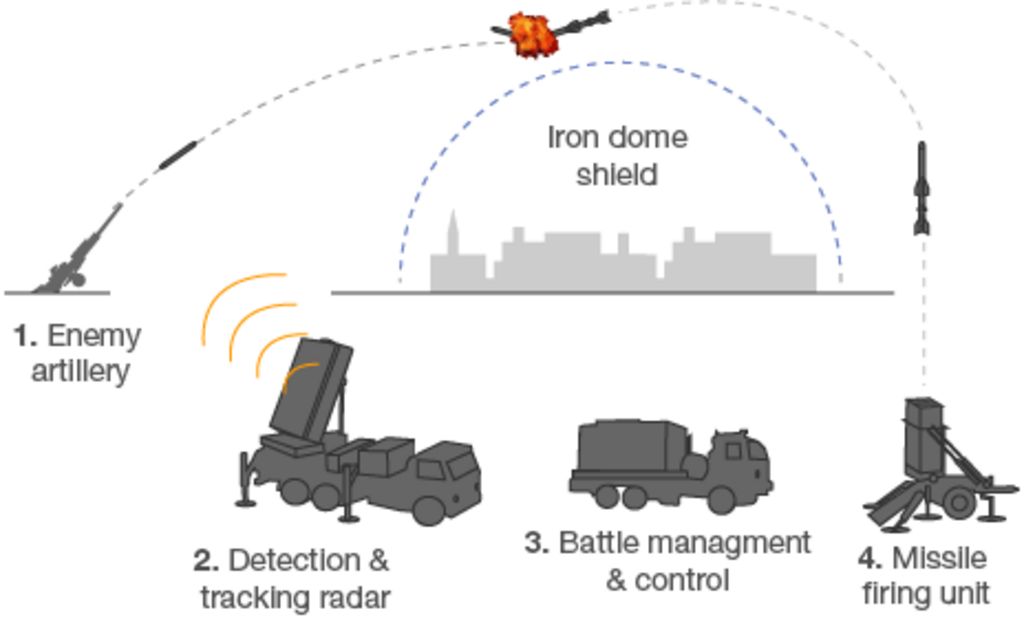The "Golden Dome" Initiative: Trump's Plan For A National Missile Defense

Table of Contents
Goals and Objectives of the Golden Dome Initiative
The overarching goal of the "Golden Dome Initiative" was to achieve complete protection of the United States against intercontinental ballistic missile (ICBM) attacks. This ambitious objective stemmed from a perceived increase in global instability and the proliferation of ballistic missile technology among potential adversaries. The initiative aimed to provide a robust and layered defense system capable of neutralizing incoming threats.
- Deterrence of enemy aggression: The very existence of a highly effective missile defense system was intended to deter potential adversaries from launching attacks. The belief was that the knowledge that an attack would likely fail would discourage aggression.
- Protection of US territory and assets: The primary purpose was to safeguard American citizens, infrastructure, and military assets from ballistic missile strikes.
- Strengthening national security: A successful missile defense system would significantly bolster US national security by reducing vulnerability to a critical type of attack.
- Maintaining a strategic advantage over adversaries: The "Golden Dome Initiative" sought to ensure that the US maintained a technological and strategic edge in the global landscape.
The threat landscape motivating the initiative included concerns about the growing nuclear capabilities of North Korea, Iran's ballistic missile program, and the potential for state-sponsored or non-state actor attacks. These concerns highlighted the need for a more comprehensive and advanced missile defense system than existed at the time.
Proposed Technologies and Components of the Golden Dome Initiative
The "Golden Dome Initiative" envisioned a multi-layered defense system incorporating several advanced technologies working in concert. This layered approach aimed to increase the overall effectiveness of the system by providing multiple opportunities to intercept incoming missiles.
- Ground-based interceptors (GBIs): These land-based missiles would be positioned to intercept ICBMs during their final descent. Existing Ground-Based Midcourse Defense (GMD) systems would likely be upgraded and expanded.
- Sea-based missile defense systems (Aegis Ashore): Aegis Ashore systems, deployed on land, would provide an additional layer of defense by intercepting missiles at various stages of their flight.
- Space-based sensors and tracking systems: The initiative contemplated the development and deployment of advanced space-based sensors and tracking systems to provide early warning of missile launches and improved targeting data for interceptors.
- Advanced radar and early warning systems: Improved radar systems and early warning networks were crucial for timely detection and tracking of incoming missiles. This would allow for sufficient reaction time for the other components of the system.
These components would work together to create a layered defense system, with space-based sensors providing early warning, followed by interception at various stages of the missile’s trajectory by ground-based and sea-based systems. Potential upgrades included exploring directed energy weapons and other cutting-edge technologies for improved interception capabilities.
Challenges and Criticisms of the Golden Dome Initiative
The "Golden Dome Initiative," while ambitious, faced numerous challenges and criticisms. The technological feasibility of creating a completely impenetrable defense system was questioned by many experts. Could the proposed technologies truly provide the level of protection promised?
- Cost and budgetary concerns: The financial investment required for research, development, deployment, and maintenance of such a complex system would be enormous, raising concerns about potential budgetary strain.
- Effectiveness against sophisticated countermeasures: Adversaries could develop sophisticated countermeasures, such as decoys and maneuverable warheads, designed to overwhelm or defeat the system.
- Political and international implications: The initiative could spark an arms race, increasing international tensions and destabilizing global security. It also raised concerns about compliance with existing arms control treaties.
- Environmental concerns related to the deployment of space-based assets: The launch and operation of space-based components could contribute to space debris and potentially have negative environmental consequences.
Proponents of the initiative argued that the potential benefits – protection of US citizens and assets – outweighed the risks and costs. They emphasized the need to invest in advanced defensive capabilities to counter emerging threats.
The Golden Dome Initiative in the Context of Existing Missile Defense Systems
The "Golden Dome Initiative" would have built upon existing missile defense programs, such as the Ground-Based Midcourse Defense (GMD) system. However, its scale and ambition represented a significant expansion of US missile defense capabilities. The initiative's implementation would have required substantial investment in new technologies and infrastructure.
The initiative's place within the broader context of US national security strategy was to create a robust shield against ballistic missile threats, complementing other defensive and offensive strategies. Existing infrastructure, like radar stations and communication networks, would have been leveraged and potentially upgraded. However, the initiative's potential impact on international relations and arms control treaties remained a significant concern.
Conclusion
The "Golden Dome Initiative" represented a significant and ambitious undertaking in the realm of national missile defense. While promising unprecedented protection against ICBM attacks, it also faced considerable challenges regarding technological feasibility, budgetary constraints, and potential international repercussions. The initiative highlighted the ongoing debate surrounding the effectiveness and cost-effectiveness of comprehensive missile defense systems.
The "Golden Dome Initiative," and its legacy within the broader discussion of national missile defense strategies, remains a crucial topic for policymakers and security experts. Further research and informed debate are crucial to understand the complexities and potential consequences of such ambitious projects. Continue to explore and learn more about the "Golden Dome Initiative" and its lasting impact on national missile defense strategies.

Featured Posts
-
 Australian Running History Made New Fastest Crossing On Foot
May 22, 2025
Australian Running History Made New Fastest Crossing On Foot
May 22, 2025 -
 Summer Travel Chaos Airlines Prepare For Increased Disruptions
May 22, 2025
Summer Travel Chaos Airlines Prepare For Increased Disruptions
May 22, 2025 -
 Washington D C Shooting Embassy Names Victims
May 22, 2025
Washington D C Shooting Embassy Names Victims
May 22, 2025 -
 Thursday Wordle March 13th Hints Clues And Solution For 363
May 22, 2025
Thursday Wordle March 13th Hints Clues And Solution For 363
May 22, 2025 -
 Abn Amro Zijn Nederlandse Huizen Wel Betaalbaar Reactie Geen Stijl
May 22, 2025
Abn Amro Zijn Nederlandse Huizen Wel Betaalbaar Reactie Geen Stijl
May 22, 2025
